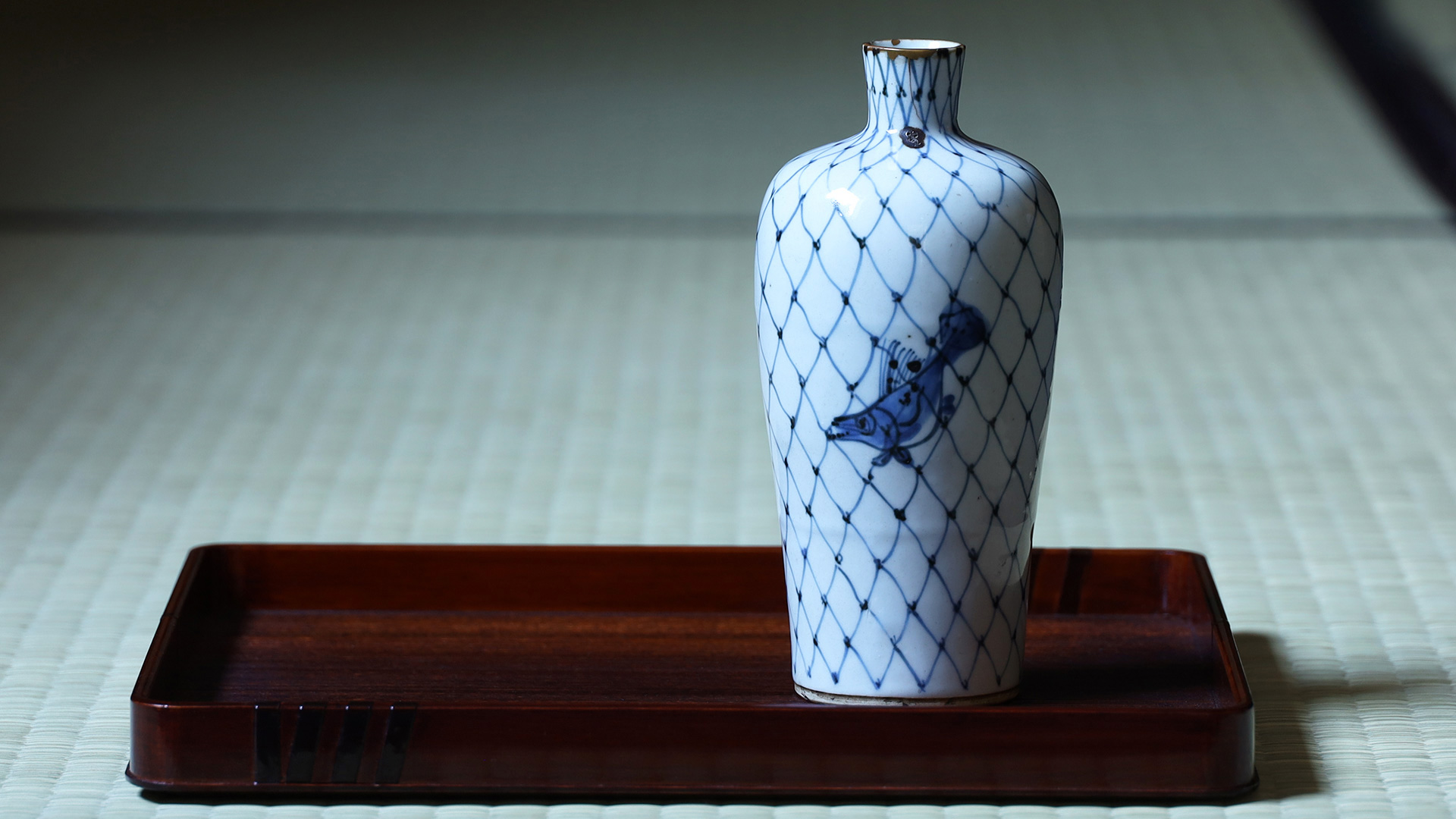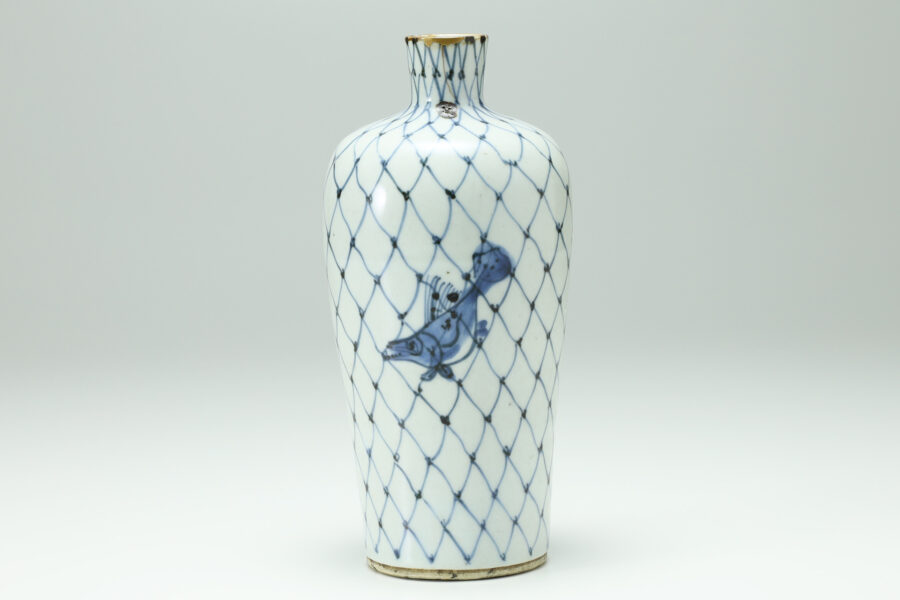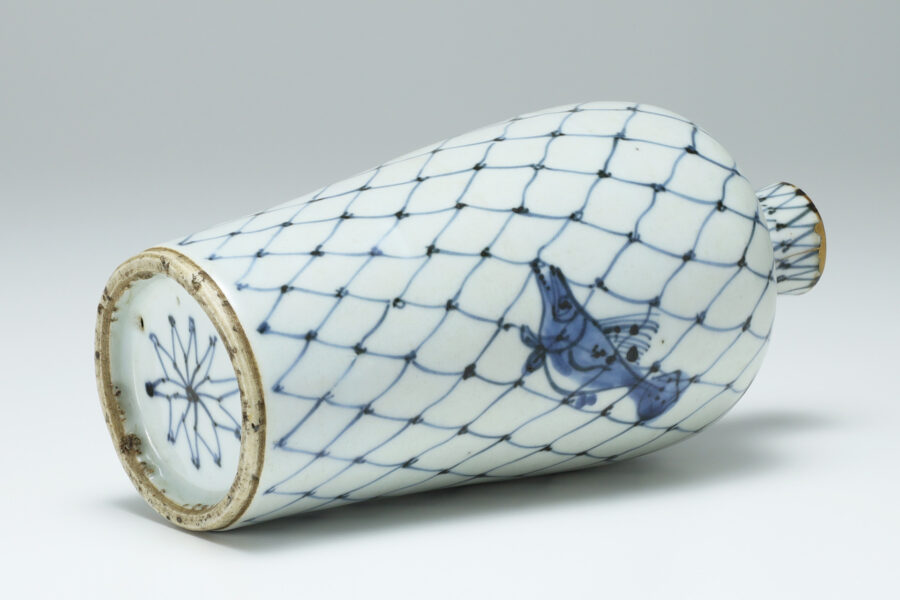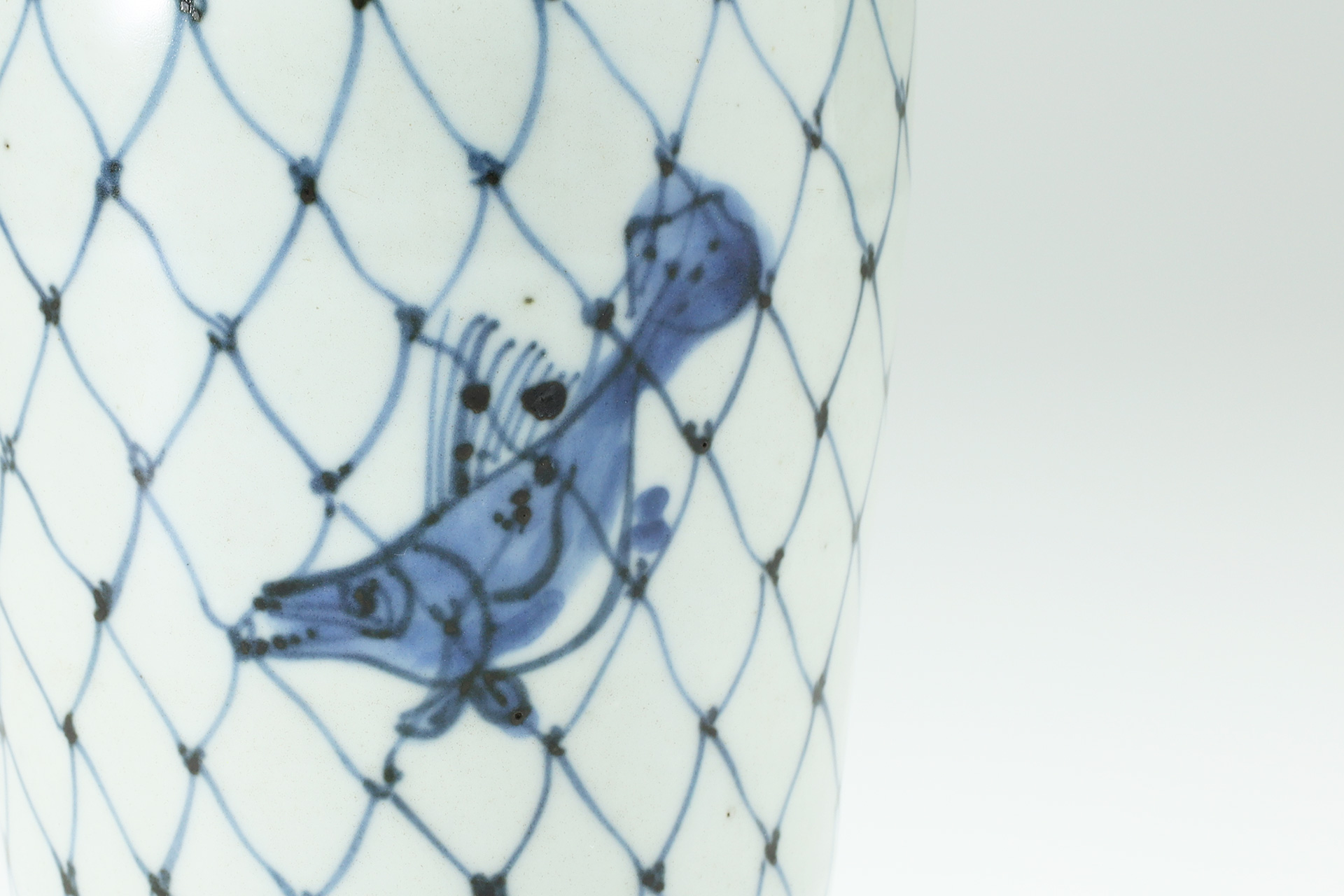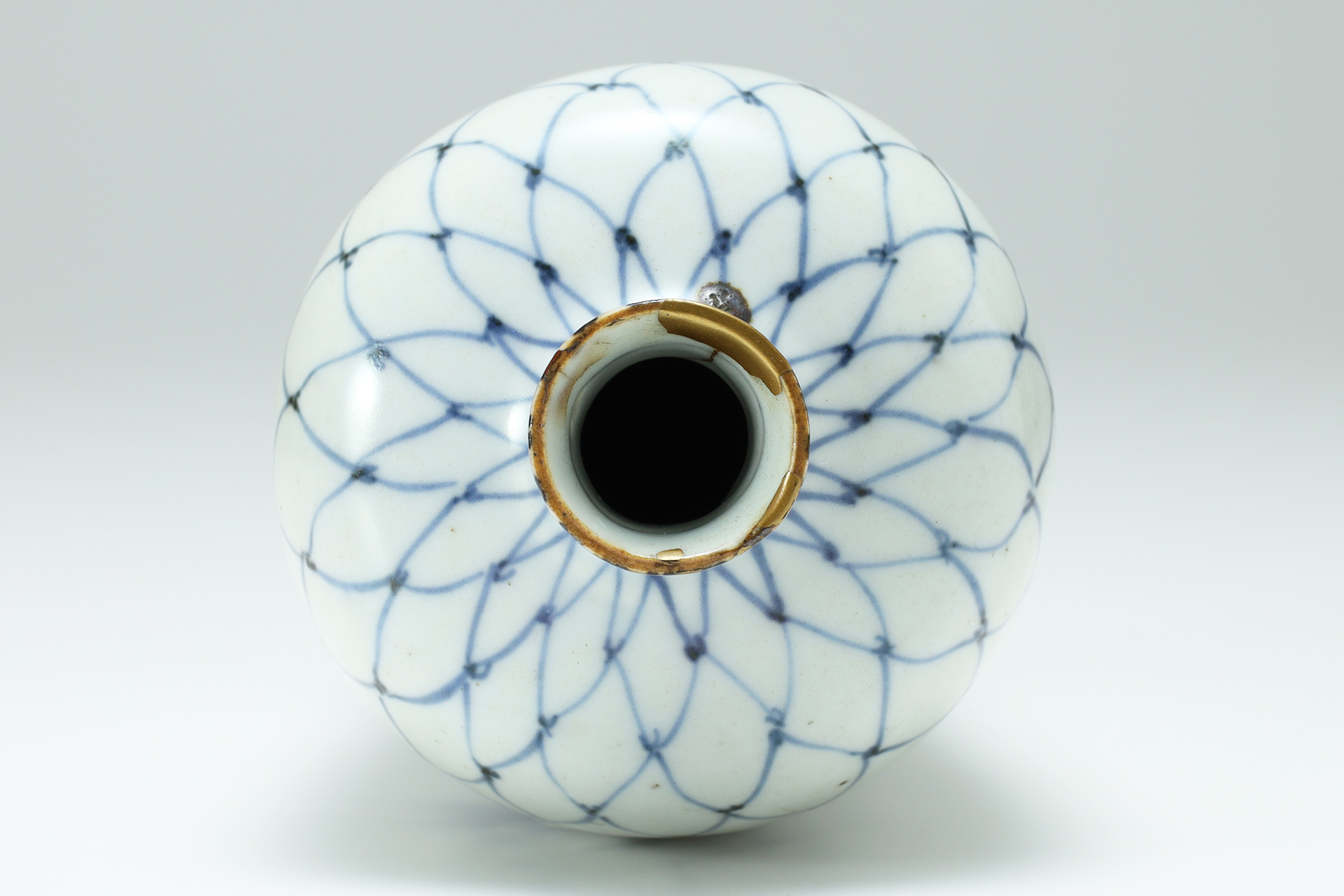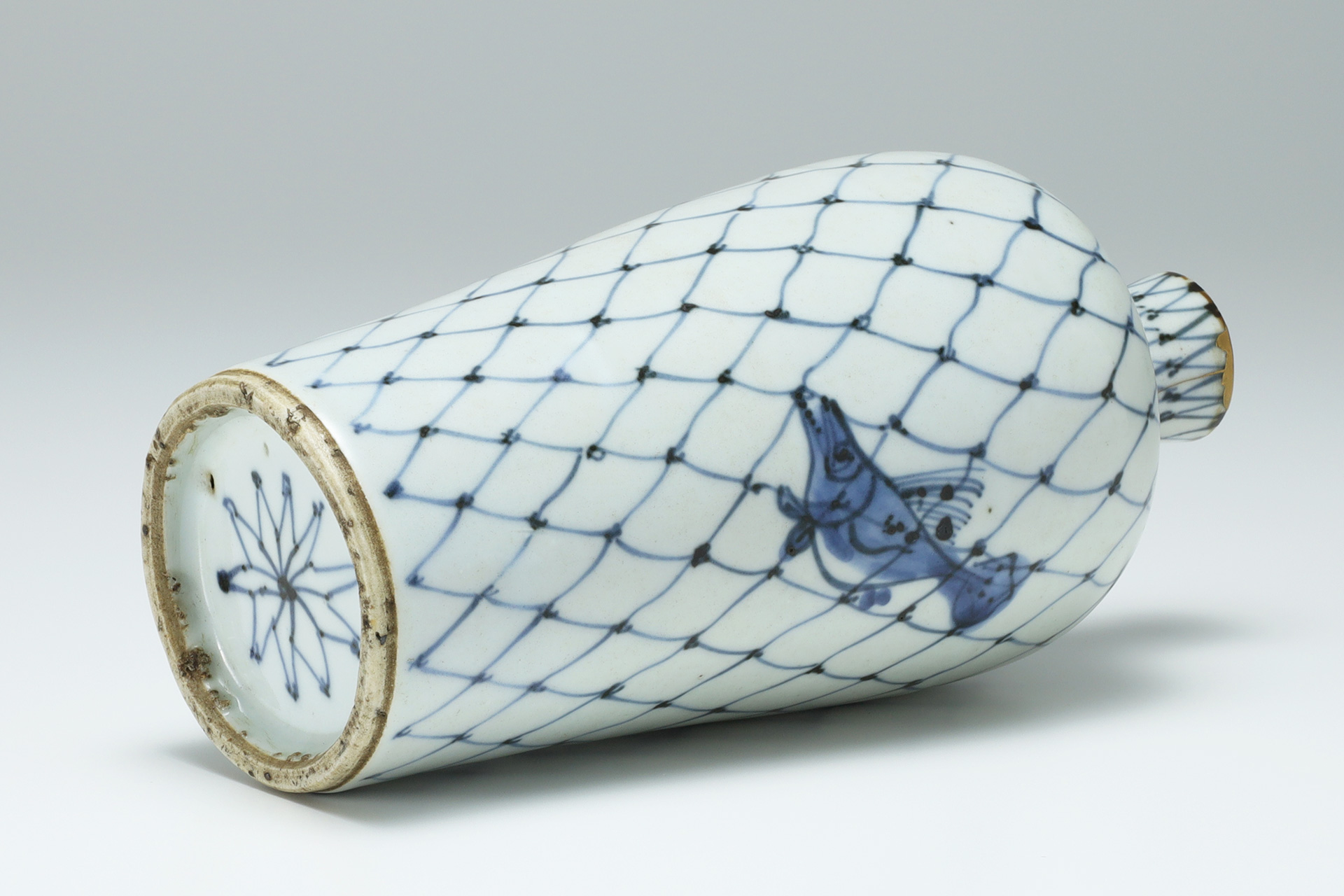Kosometsuke Sake Bottle with Design of Mesh and Fish(Ming Dynasty)
Sold Out
It is the masterpiece with a mesh design that is considered one of the most famous among kosometsuke. The mesh has the meaning of making a wish come true(entanglement), and it seamlessly covers the entire surface to prevent wishes from spilling out. Fish is an allegory for abundance, and the auspicious design of the mesh and fish is "To Grab Abundance with One Swoop." It is the special order item by japanese master of tea ceremony, and has continued to fascinate many people for about 400 years. On the body, there are two "Body Joints" that can be seen as a characteristic of the ming dynasty.
Inquiry
- Product Code
- 230903-12
- Period
- Ming Dynasty
Early 17th century
- Weight
- 372g
- Body Diameter
- 8.4cm
- Top Diameter
- 2.7cm
- Height
- 17.7cm
- Bottom Diameter
- 6.1cm
- Description
- We shall make a harikomi box for you
- Capacity
- About 480ml
- Condition
- There are crack and repairs with gold at the edge
The base, blue and white coloring, and firing are also ideal.

Kosometsuke
Kosometsuke refers to the blue and white(sometsuke)porcelain that were fired at the jingdezhen kiln in china, mainly during the late ming dynasty’s tianqi era(1621-27). These works were made especially for japan and many of them remain in the country. In contrast to the qing dynasty’s blue and white porcelains, known as shin-watari(new-watari), a unique group belonging to the old style ko-watari(old-watari)blue and white porcelains are now independently referred to as “Kosometsuke”. These porcelains can be broadly divided into tea utensils ordered by master of tea ceremony and everyday items. The kosometsuke of tea utensils, which were popular among the japanese, have a thick and heavy overall appearance, possibly due to the use of a thick clay base. At the end of the ming dynasty, there was a trend among japanese master of tea ceremony to order and fire unique tea utensils, with each master of tea ceremony ordering their preferred tools. Many kosometsuke works have glaze peeling off due to differences in the shrinkage rates of the clay and glaze, exposing the inner clay. This phenomenon, which resembles the appearance of being eaten by worms, is called “Mushikui(worm eaten)”. One characteristic is that mushikui(some holes)can often be found in areas where the glaze is thinly applied, such as the rim or angular parts. While this might be considered a flaw in ordinary porcelains, master of tea ceremony found elegance in this natural phenomenon and appreciated the rough taste, valuing it as an aesthetic effect.



